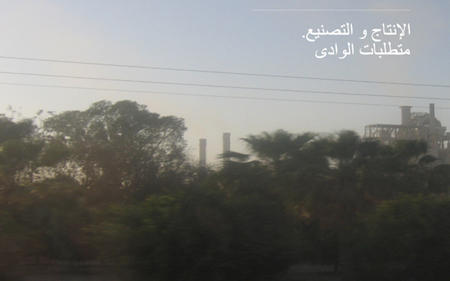Production and Industries - Needs of a valley

Students: James Junkyung Yeo, Oliver Muff
The research focuses on the various modes of production within the Nile Valley, and the ways, often improvisational, in which they are able to overcome the conditions of scarcity of recourses and the lack of financial incentives - these small and basic markets and production sites have to satisfy the needs and the demands of the large and increasing population.
Although there were several large efforts to modernise the country, an industrial shift never replaced the agricultural production in Egypt. This fact becomes apparent when looking at the labour employment numbers - industries entail only about 17%, agriculture 32%, and service economies (including tourism, real-estate market, etc) lead with 51%. Since the revolution in 1952 and the subsequent nationalisation, most of the industrial areas in Egypt became almost exclusively a state undertaking. In 1970 under Sadat an authority for industrial free zones was established in order to attract private investments in the industrial production. Subsequently two different models appeared out of this new apparatus: first, industrial cities as part of the first generation of new towns concentrated around Cairo and second, industrial areas in the different Governorates. The Governorates throughout Egypt and along the Nile were quick to establish industrial zones themselves, with support from the ‘Industrial Development Authority’. These areas tended to be large demarcated zones at the fringe of the Valley to the desert, but often lacking in infrastructure, water supplies, power etc. Many of these areas were established without feasibility studies on the nature of local market demands. Until today many of the formal organized industrial productions seem to have failed. This is also due to the large distances between such production sites and the populated areas where cheaper labour would have been available.
A widespread phenomenon of developing countries in which production is based within informal economies is in the case of Egypt represented by a very unique type of microenterprises or workshops. Since generations such enterprises are organised as family holdings and build on highly connected social networks, which enable them to operate productively and sustain themselves ‘outside’ of the formal markets. In Cairo for example, such networks are visible in spatial arrangements of ‘clusters of workshops’ - the neighbourhood of shoemakers, the neighbourhood of metal workshops, etc. In the region of Assiut other specific spatial and organisational patterns are appearing such as continuous rows of informal workshops along main roads leading to urban centres.

